
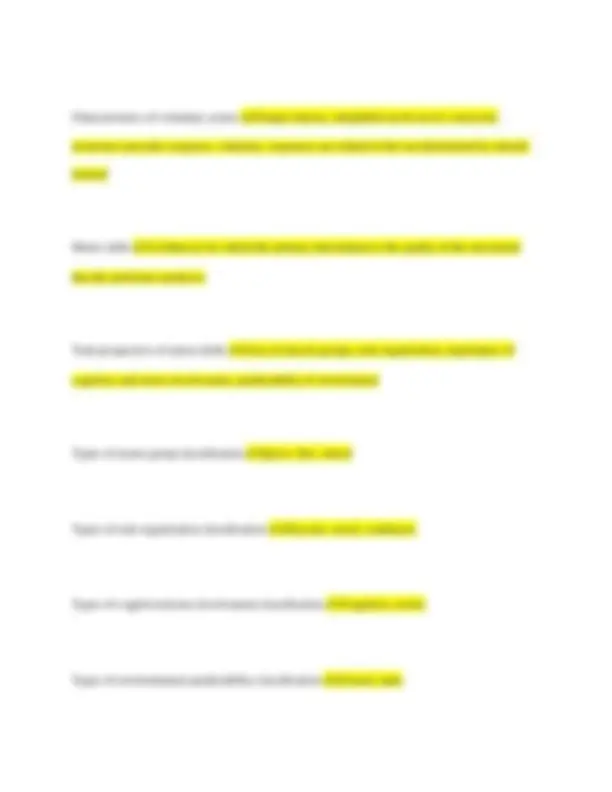
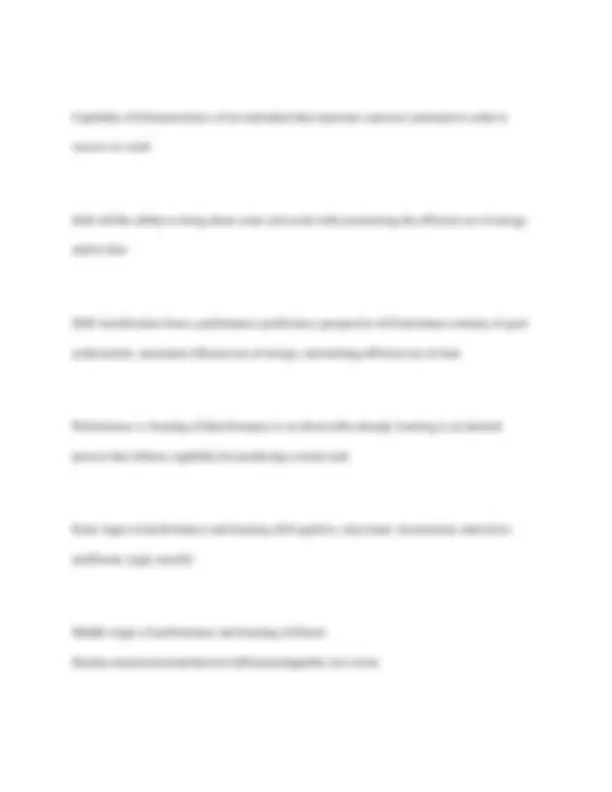
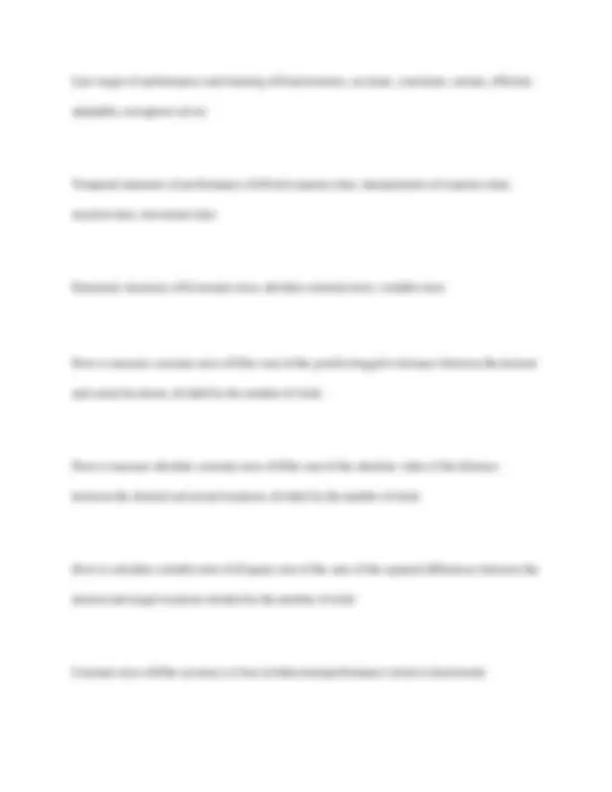
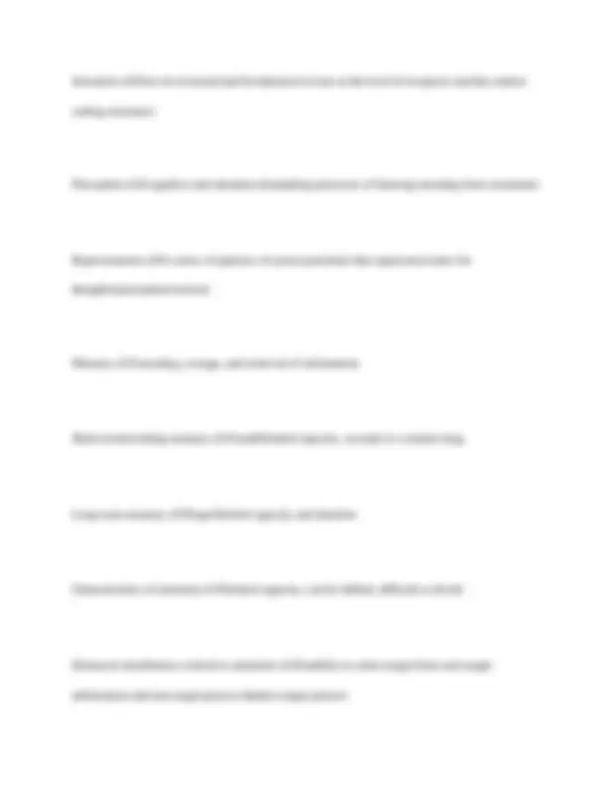
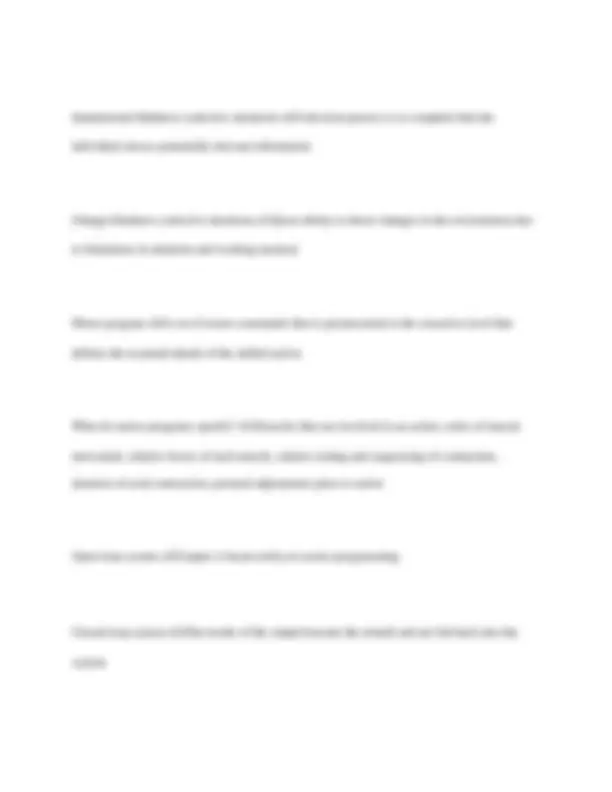
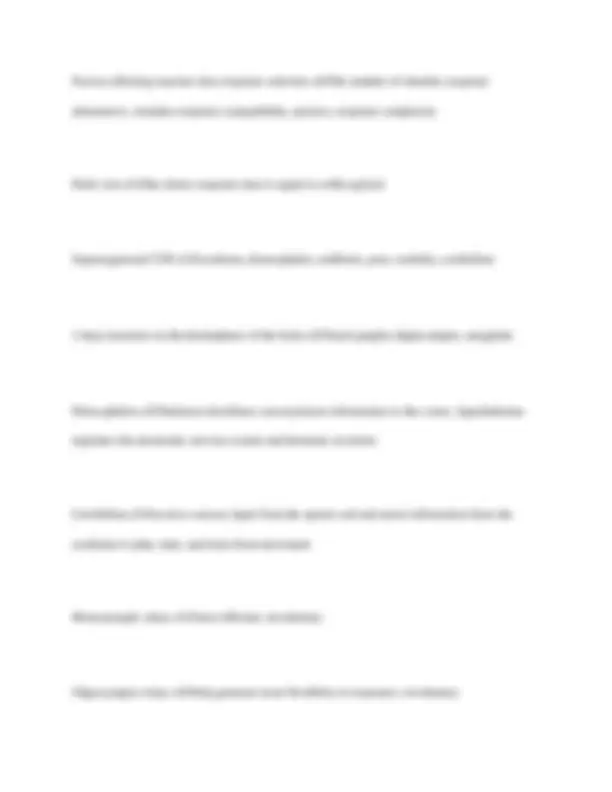
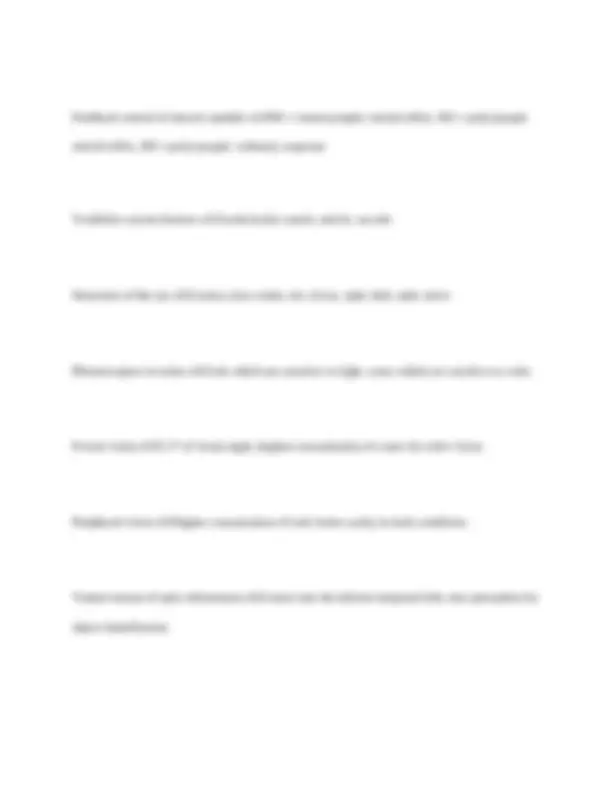
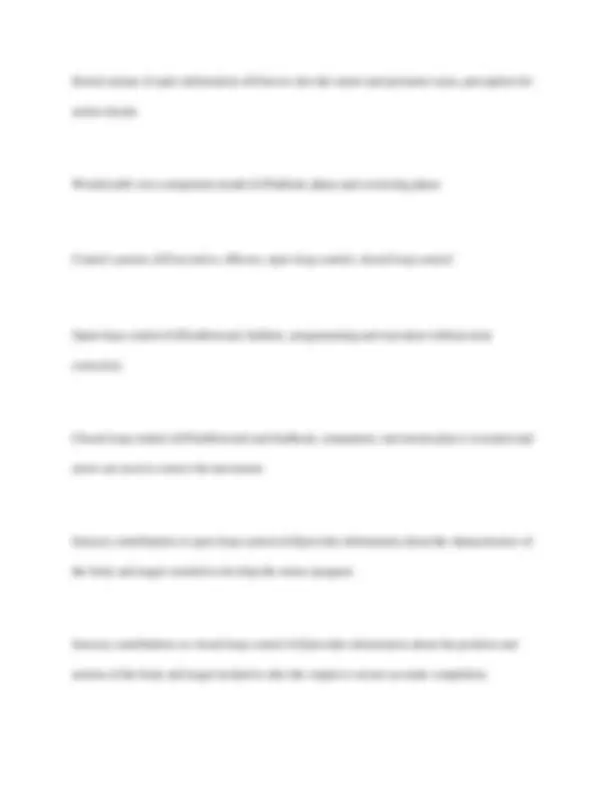
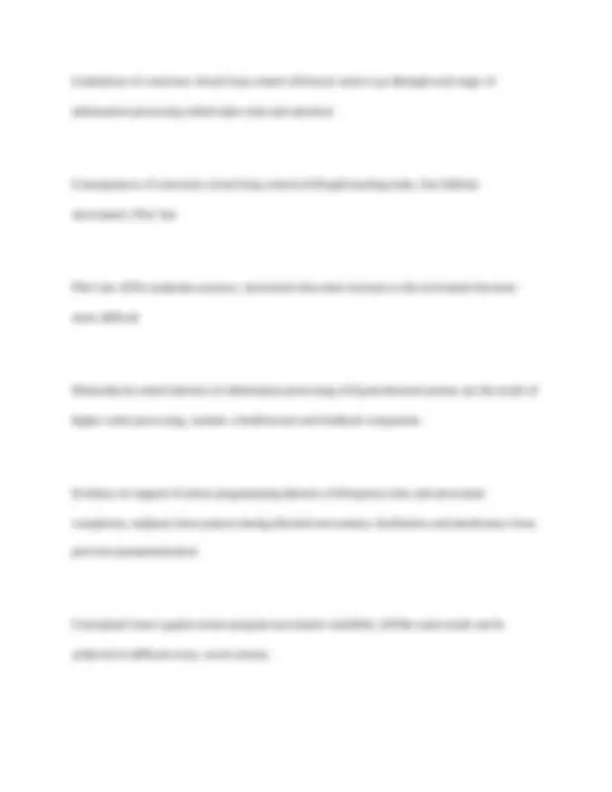
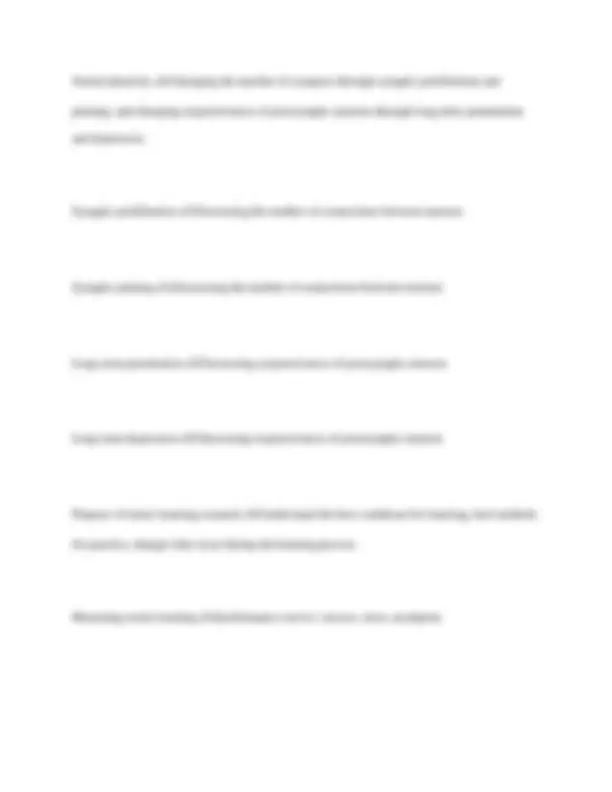
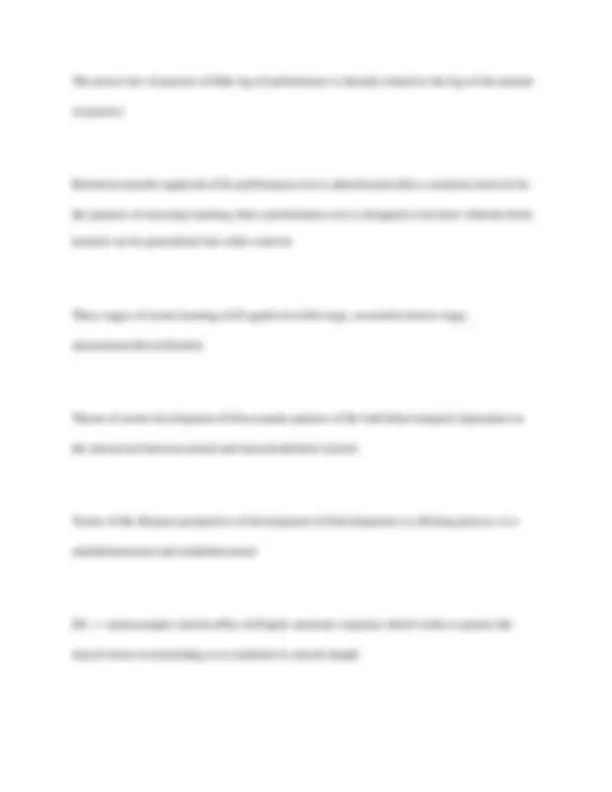
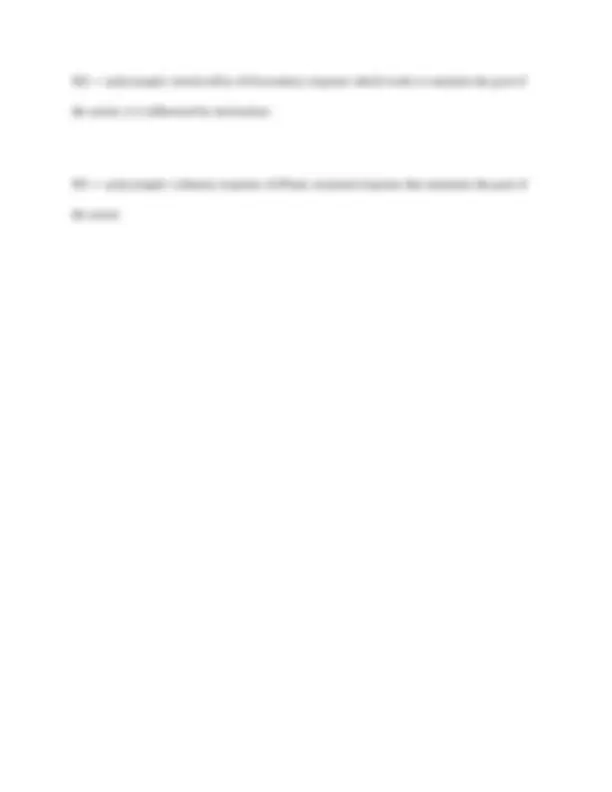


Study with the several resources on Docsity

Earn points by helping other students or get them with a premium plan


Prepare for your exams
Study with the several resources on Docsity

Earn points to download
Earn points by helping other students or get them with a premium plan
Community
Ask the community for help and clear up your study doubts
Discover the best universities in your country according to Docsity users
Free resources
Download our free guides on studying techniques, anxiety management strategies, and thesis advice from Docsity tutors
This document provides a comprehensive overview of motor behaviour, covering key concepts, principles, and applications. It explores the subdivisions of motor behaviour, including motor control, motor learning, and motor development. The document delves into the cognitive and dynamical systems approaches to motor behaviour, examining the information processing model and the role of the nervous system in movement. It also discusses various aspects of motor skills, including task perspectives, types of motor skills, and performance proficiency. The document further explores the concepts of capability and skill, performance vs. Learning, and the stages of performance and learning. It also covers temporal and kinematic measures of performance, including constant error, absolute constant error, and variable error. Finally, it examines the brain's role in motor behaviour, including the structure and function of the brain, the role of the cerebellum, and the different types of brain activity.
Typology: Exams
1 / 20

This page cannot be seen from the preview
Don't miss anything!













Subdivisions of motor behaviour ✔✔motor control, motor learning, motor development
Goal of motor control ✔✔to understand the set of cognitive and neural processes involved in the planning and execution of individual actions
Goal of motor learning ✔✔to understand the set of challenges and processes of improving and perfecting a performance
Goal of motor development ✔✔to understand the set of processes and factors leading to changes in performance and learning across the lifespan
Cognitive/reductionist approach ✔✔functions can be derived from understanding the characteristics of the elements
Complex/dynamical systems approach ✔✔functions cannot be derived from understanding the characteristics of the elements, but rather the whole system
Focus of information processing approach of reductionism ✔✔the focus is on the manner in which stimulus information is used to bring about behaviour
Neuroscience approach of reductionism ✔✔the focus is on the neural events underlying movement
Active/endogenous movement ✔✔movement resulting from muscular contractions
Passive/exogenous movement ✔✔movement resulting from forces that are external to the body
Reflex action (motor responses) ✔✔involuntary and relatively stereotyped responses to specific stimuli — the result of a specific, unchanging neural network
Characteristics of reflex action ✔✔short latency, generalized/stereotyped, conscious awareness does not precede response involuntarily, response is generally determined by stimulus, innate
Voluntary action (motor responses) ✔✔a response resulting from higher order processing — the result of a flexible and variable neural network
Capability ✔✔characteristics of an individual that represent a person's potential to achieve success at a task
Skill ✔✔the ability to bring about some end result with maximizing the efficient use of energy and/or time
Skill classification from a performance proficiency perspective ✔✔maximum certainty of goal achievement, maximum efficient use of energy, maximizing efficient use of time
Performance vs learning ✔✔performance is an observable attempt, learning is an internal process that reflects capability for producing a motor task
Early stages of performance and learning ✔✔cognitive, inaccurate, inconsistent, indecisive, inefficient, rigid, errorful
Middle stages of performance and learning ✔✔more fluid/accurate/consistent/decisive/efficient/adaptable, less errors
Late stages of performance and learning ✔✔autonomous, accurate, consistent, certain, efficient, adaptable, recognizes errors
Temporal measures of performance ✔✔total response time, interpretation of response time, reaction time, movement time
Kinematic measures ✔✔constant error, absolute constant error, variable error
How to measure constant error ✔✔the sum of the positive/negative distance between the desired and actual locations, divided by the number of trials
How to measure absolute constant error ✔✔the sum of the absolute value of the distance between the desired and actual locations, divided by the number of trials
How to calculate variable error ✔✔square root of the sum of the squared differences between the desired and target locations divided by the number of trials
Constant error ✔✔the accuracy or bias in behaviour/performance (total or directional)
Differential research in motor behaviour METHOD ✔✔have a group of people perform a task and see how their characteristics, attributes, or abilities predict performance
Differential research in motor behaviour PURPOSE ✔✔talent identification, assessment of difficulties
Information processing from stimulus to response ✔✔sensory receptor, sensory input, integration in brain/spinal cord, motor output, effector muscle
Input in the information processing model ✔✔information that is received or generated by the central nervous system, initially external
Human system in the information processing model ✔✔stimulus identification, response selection
Output in the information processing model ✔✔response programming: behaviour completed based on processing
Sensation ✔✔low-level neural and biochemical events at the level of receptors and the earliest coding structures
Perception ✔✔cognitive and attention demanding processes of drawing meaning from sensations
Representation ✔✔a series of patterns of action potentials that represents/codes for thoughts/perceptions/actions
Memory ✔✔encoding, storage, and retrieval of information
Short-term/working memory ✔✔small/limited capacity, seconds to a minute long
Long-term memory ✔✔large/limited capacity and duration
Characteristics of attention ✔✔limited capacity, can be shifted, difficult to divide
Distractor interference (selective attention) ✔✔inability to select target from non-target information and non-target process hinders target process
Factors affecting reaction time response selection ✔✔the number of stimulus-response alternatives, stimulus-response compatibility, practice, response complexity
Hick's law ✔✔the choice response time is equal to a+b[Log2(n)]
Suprasegmental CNS ✔✔cerebrum, diencephalon, midbrain, pons, medulla, cerebellum
3 deep structures in the hemispheres of the brain ✔✔basal ganglia, hippocampus, amygdala
Diencephalon ✔✔thalamus distributes sensory/motor information to the cortex, hypothalamus regulates the autonomic nervous system and hormone secretion
Cerebellum ✔✔receives sensory input from the spinal cord and motor information from the cerebrum to plan, time, and learn from movement
Monosynaptic relays ✔✔most efficient, involuntary
Oligosynaptic relays ✔✔help generate more flexibility in responses, involuntary
Polysynaptic relays ✔✔take the longest to generate but are the most flexible, voluntary or involuntary
Exteroreceptors ✔✔vision, audition, taste, smell
Interoreceptors ✔✔balance, somatic
Proprioception ✔✔sensory information that arises from within the body that allows one to recognize the location of the body in space
Kinesthesis ✔✔sensory information that arises from within the body that allows one to recognize the motion of the body in space
Golgi tendon organ function ✔✔provides information about muscle force
Types of muscle spindles ✔✔chain fibres, bag fibres, afferent neurons
Feedback control of muscle spindles ✔✔M1 = monosynaptic stretch reflex, M2 = polysynaptic stretch reflex, M3 = polysynaptic voluntary response
Vestibular system features ✔✔semicircular canals, utricle, saccule
Structures of the eye ✔✔cornea, lens, retina, iris, fovea, optic disk, optic nerve
Photoreceptors in retina ✔✔rods which are sensitive to light, cones which are sensitive to color
Foveal vision ✔✔2-3º of visual angle, highest concentration of cones for color vision
Peripheral vision ✔✔higher concentration of rods, better acuity in dark conditions
Ventral stream of optic information ✔✔comes into the inferior temporal lobe, true perception for object identification
Dorsal stream of optic information ✔✔moves into the motor and premotor areas, perception for action stream
Woodworth's two-component model ✔✔ballistic phase and correcting phase
Control systems ✔✔executive, effector, open-loop control, closed-loop control
Open-loop control ✔✔feedforward, ballistic, programming and execution without error correction
Closed-loop control ✔✔feedforward and feedback, comparator, movement plan is executed and errors are used to correct the movement
Sensory contributions to open loop control ✔✔provides information about the characteristics of the body and targets needed to develop the motor program
Sensory contributions to closed loop control ✔✔provides information about the position and motion of the body and target needed to alter the output to ensure accurate completion
Conceptual issues against motor program degrees of freedom/storage problem ✔✔each different movement requires a different motor program, complexity and size of each motor program
Bernstein's degrees of freedom problem ✔✔the number of degrees of freedom that are needed to be controlled is much greater than is needed to describe the action
Dynamical systems approach ✔✔movement emerges through a process of self-organization that is the result of complex interactions among the numerous connected but individual elements
Basic idea of dynamical systems approach ✔✔humans are a set of complex physical systems, so our behaviour is governed by physical laws
Constraint ✔✔something that limits degrees of freedom
Physical constraint ✔✔characteristics of the human systems that limit and shape possible behaviours
Affordance ✔✔environmental constraints
Evidence for dynamical systems approach ✔✔spontaneous transitions between patterns of movement under predictable conditions
Collective variable/order parameter ✔✔the observable behaviour state/movement pattern
Control parameter ✔✔external influences that move the system through a series of stable states
Potential ✔✔probability that a single order parameter will emerge
Attractor state/dominant pattern ✔✔order parameters with the highest potentials and greatest accuracy/stability
Advantages of dynamical systems theory ✔✔explains spontaneous transitions between movement patterns, movement variability, novel self movement problem, storage problem
Problems with dynamical systems theory ✔✔influence of intention is secondary, triphasic burst pattern during blocked actions
The power law of practice ✔✔the log of performance is linearly related to the log of the amount of practice
Retention-transfer approach ✔✔a performance test is administered after a retention interval for the purpose of assessing learning, then a performance test is designed to test how what has been learned can be generalized into other contexts
Three stages of motor learning ✔✔cognitive/verbal stage, associative/motor stage, autonomous/diversification
Theme of motor development ✔✔movement patterns of the individual uniquely dependent on the interaction between neural and musculoskeletal systems
Tenets of the lifespan perspective of development ✔✔development is a lifelong process, it is multidimensional and multidirectional
M1 — monosynaptic stretch reflex ✔✔rapid, autonatic response which works to protect the muscle from overstretching or to maintain its muscle length
M2 — polysynaptic stretch reflex ✔✔secondary response which works to maintain the goal of the action, it is influenced by instructions
M3 — polysynaptic voluntary response ✔✔final, sustained response that maintains the goal of the action